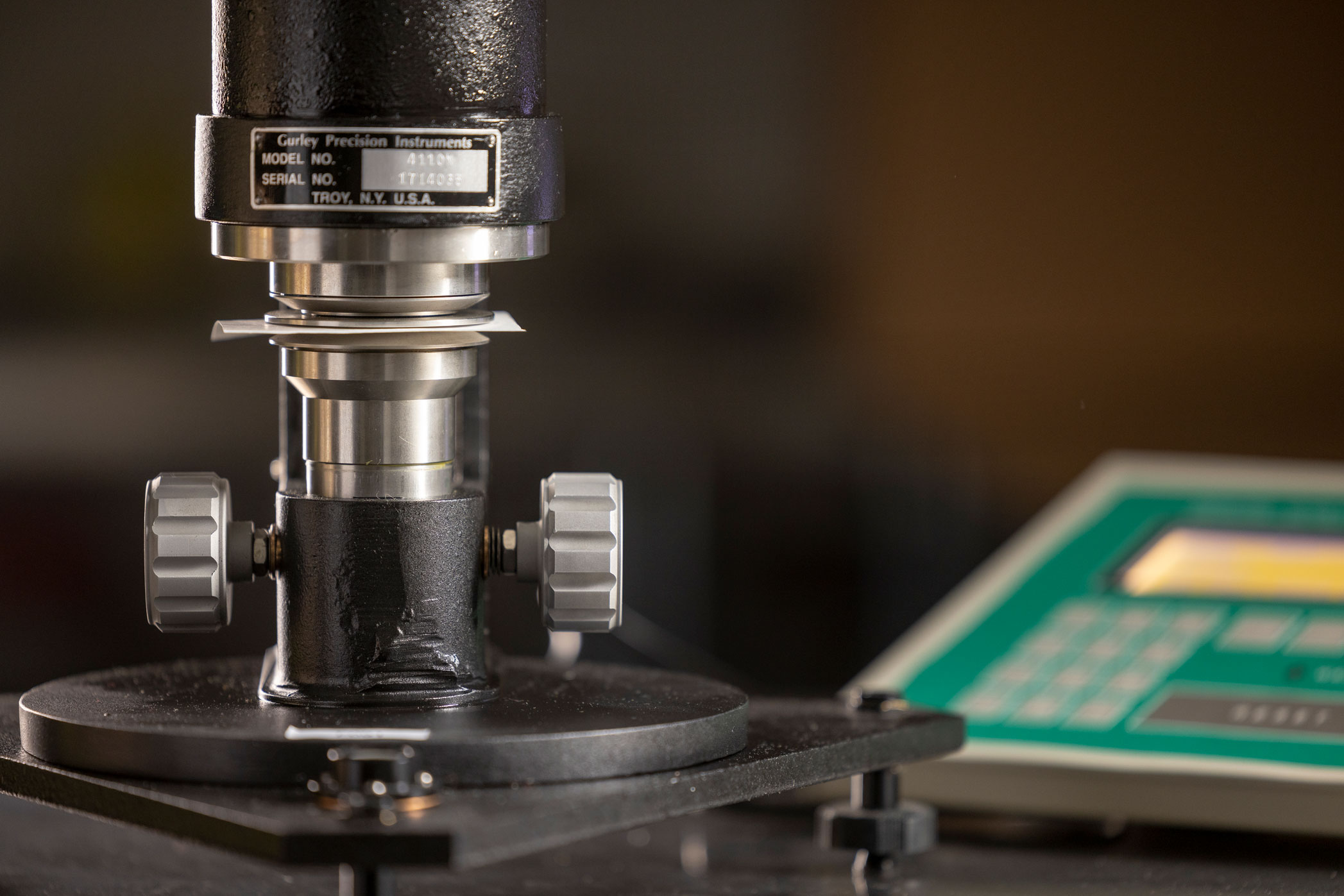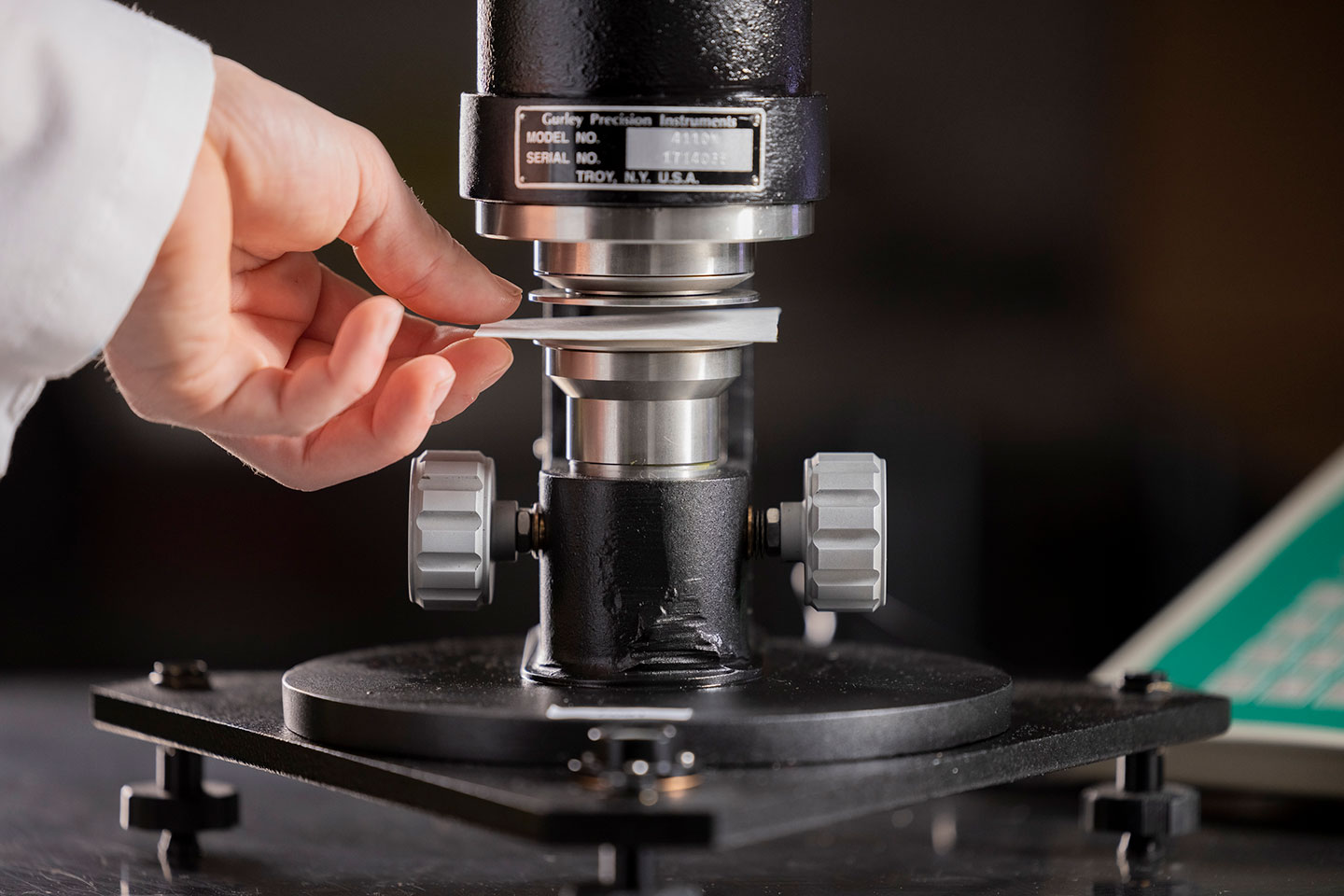
Porosity/Air Permeability Test
ISO 11607 requires that the materials which are used to construct sterile barrier packages are capable of providing a barrier to microorganisms. A distinction is made between materials that are porous in nature (such as Tyvek or Paper) or non-porous in nature (such as foil or film). Porous materials are evaluated separately by ASTM F1608 microbial ranking.
For non-porous materials, such as film and foil, a microbial barrier is demonstrated by proving that the material is impervious to the passage of air. The Gurley Porosity Test is used for this purpose. A swatch of material is placed into the apparatus. The material is positioned as a membrane which is restraining the passage of 100ccs of air at a heightened pressure. If there is no pressure loss detected, then the material has proven to be impermeable to the passage of air.

Industry Application
This air permeability test measures the ability of air to pass through a material after being subjected to an event, such as aging, distribution or sterilization. The ISO 11607 language is currently being strengthened regarding the performance of this test after distribution and shelf life validations. PCL engineers track regulatory trends to ensure you receive the most accurate and relevant project support.
Frequently asked questions
What does air permeability testing measure?
Air permeability testing per ISO 11607 measures the ability to pass through a material after being subjected to an event, such as aging, distribution, or sterilization.
What is an average porosity value for Tyvek?
Tyvek on average has a value of 22 seconds per 100cc. Please note that porous materials such as Tyvek and Paper are evaluated differently following the method ASTM F1608's microbial ranking. There is no Gurley porosity standard applied to Tyvek or Paper for conformance to ISO11607.